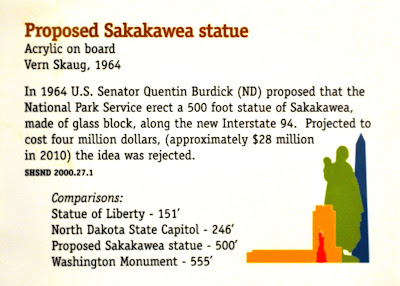"Verendrye Meets The Mandans" by Clell Gannon. Photo by Brian R. Austin, State Historical Society of North Dakota. The painting is on display in the south vestibule of the Burleigh County courthouse. Visitors will need to acquire permission to photograph the paintings.
"The Finnish" By Clell GannonA View Of Western North Dakota
Uploaded by Dakota Wind
BISMARCK, N.D. - Clell Gannon, born in Wisner, NB and raised in North Dakota, was a geologist, horticulturist, artist, and photographer. Some of his work can be viewed today in the south vestibule of the Burleigh County courthouse. In his youth, Gannon spent some considerable time rafting the Little Missouri River and Missouri River. There's some part of Gannon that never left the North Dakota Badlands. His poem is a reflection of the western North Dakota he intimately knew and deeply loved.
The Finish
by Clell
Gannon
When the
final page is written in the hist’ry of the West,
And the
cowboy and the Redmen have all gone beyond the crest
Of the
hills that rim the skyline unto other lands unguessed,
- Why, I
don’t want to be there.
When the
last he-man dies bravely with the leather on his feet,
When the
last coyote has hollered and has made a fast retreat,
When the
trail is strung with fences and the wreck is all complete,
- Why, I
don’t want to be there.
When the
West is stuck with bill-boards and the roads are slick and fine,
And when
every sunny acre wears a bloomin’ Keep
Off sign,
When
they’re playing golf instead of riding broncos – I resign,
- And, I
don’t want to be there.
When the
signs on every corner tell you just which way to go,
And when
every man’s a stranger, which he isn’t now,
you know,
- Why, I don’t
want to be there.
When
they’ve tamed it, and shamed it, when they’ve put it up for sale,
And the
final chapter’s written, why I’ll find someplace where the hungry buzzards
sail.
- ‘Cause
that’s where I want to be.










